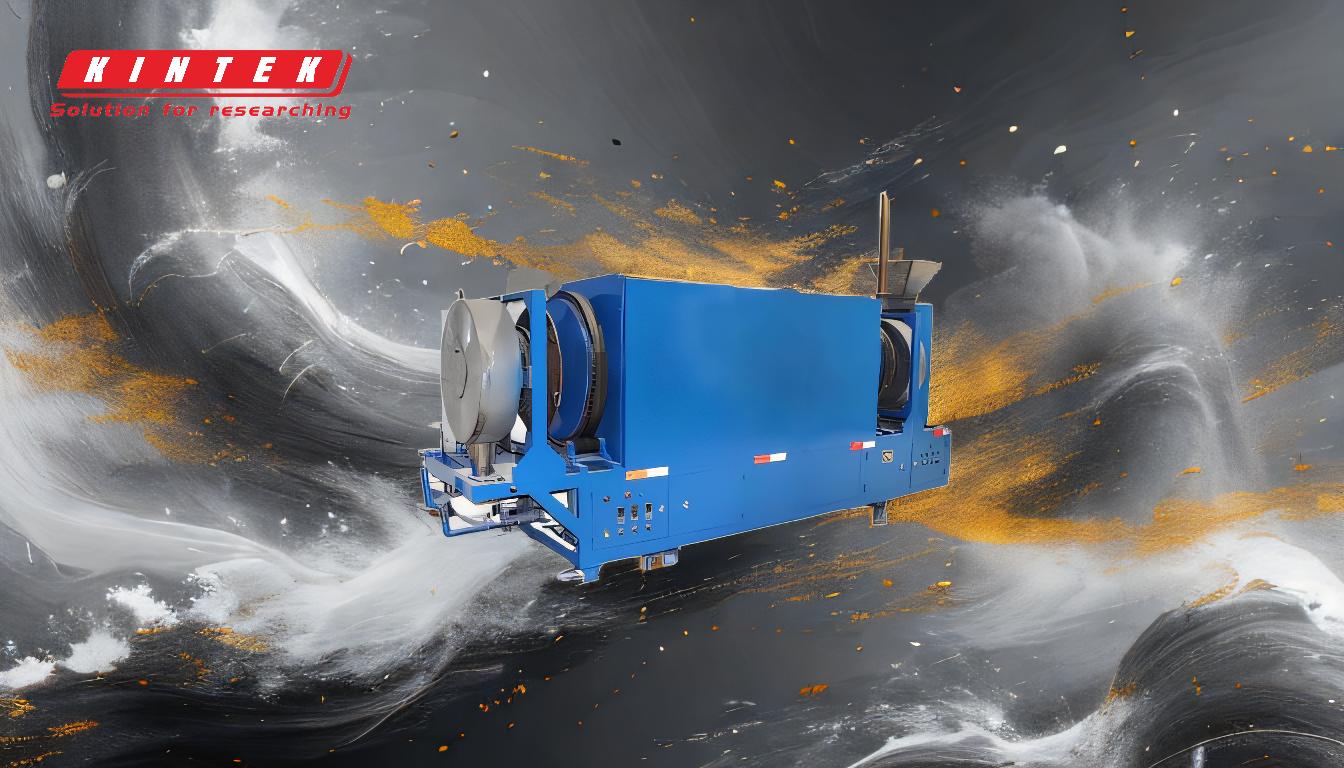A pyrolysis plant is a specialized facility designed to convert organic materials such as biomass, plastics, rubber, and waste tires into valuable products like bio-oil, biochar, and syngas through the process of pyrolysis. This thermochemical process occurs in the absence of oxygen, heating materials to temperatures between 400-900°C, causing them to decompose into smaller, usable components. The plant's primary purpose is to recycle waste materials into energy and other useful products, reducing environmental pollution and promoting sustainability. The syngas produced can be used as fuel, bio-oil can be refined for industrial or transportation use, and bio-char serves as a soil amendment or sorbent. Pyrolysis plants are equipped with safety and control systems to ensure efficient and environmentally friendly operation.
Key Points Explained:

-
Thermochemical Processing:
- Pyrolysis plants utilize a thermochemical process to break down organic materials in the absence of oxygen. This process involves heating materials to high temperatures (400-900°C), causing them to decompose into smaller, usable components. This method is particularly effective for recycling waste materials that would otherwise contribute to environmental pollution.
-
Conversion of Organic Waste:
- The primary input materials for pyrolysis plants include biomass, plastics, rubber, and waste tires. These materials are often difficult to dispose of and can cause significant environmental harm if not managed properly. Pyrolysis plants convert these waste materials into valuable products, thereby reducing the burden on landfills and minimizing environmental impact.
-
Production of Valuable Products:
- The pyrolysis process yields several valuable products:
- Bio-oil: A liquid product that can be refined and used as a fuel for transportation or industrial applications.
- Biochar: A solid residue that can be used as a soil amendment to improve soil fertility or as a sorbent for environmental cleanup.
- Syngas: A gaseous product that can be used as a fuel or further processed into biofuels. These products have a wide range of applications, making pyrolysis a versatile and valuable process.
- The pyrolysis process yields several valuable products:
-
Environmental Benefits:
- Pyrolysis plants play a crucial role in waste management and environmental protection. By converting waste materials into useful products, these plants help reduce the volume of waste sent to landfills, decrease greenhouse gas emissions, and mitigate pollution. Additionally, the process is designed to be environmentally friendly, with safety and control systems in place to minimize harmful byproducts.
-
Energy Recovery:
- One of the significant advantages of pyrolysis is energy recovery. The syngas produced during the process can be used as a fuel, providing a renewable energy source. This not only helps in reducing reliance on fossil fuels but also contributes to energy sustainability.
-
Versatility in Feedstock:
- Pyrolysis plants can process a wide range of organic materials, including plastics, rubber, tires, wood waste, and yard trimmings. This versatility makes pyrolysis an attractive option for waste management, as it can handle various types of waste streams and convert them into valuable products.
-
Safety and Control Systems:
- Modern pyrolysis plants are equipped with advanced safety and control systems to ensure efficient and safe operation. These systems monitor and control the temperature, pressure, and other critical parameters to optimize the pyrolysis process and prevent accidents. This ensures that the plant operates smoothly and produces high-quality products.
-
Economic Benefits:
- The conversion of waste materials into valuable products has significant economic benefits. By producing bio-oil, biochar, and syngas, pyrolysis plants create new revenue streams from materials that would otherwise be considered waste. This can lead to cost savings in waste management and provide economic incentives for recycling and sustainability initiatives.
In summary, the purpose of a pyrolysis plant is to convert organic waste materials into valuable products through a controlled thermochemical process. This not only helps in waste management and environmental protection but also provides economic and energy benefits, making pyrolysis a key technology in the pursuit of sustainability.
Summary Table:
| Key Aspect | Description |
|---|---|
| Process | Thermochemical decomposition of organic materials at 400-900°C without oxygen. |
| Input Materials | Biomass, plastics, rubber, waste tires, and other organic waste. |
| Output Products | Bio-oil (fuel), biochar (soil amendment), and syngas (renewable energy). |
| Environmental Benefits | Reduces landfill waste, lowers greenhouse gas emissions, and minimizes pollution. |
| Economic Benefits | Creates revenue streams from waste materials and promotes sustainability. |
Interested in how a pyrolysis plant can benefit your operations? Contact us today to learn more!









